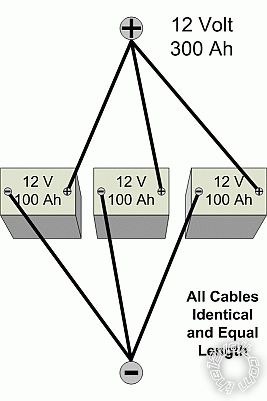Posted: November 06, 2010 at 8:59 PM / IP Logged
Posted: November 06, 2010 at 9:00 PM / IP Logged
Posted: November 06, 2010 at 9:16 PM / IP Logged
Posted: November 07, 2010 at 9:32 AM / IP Logged
Posted: November 07, 2010 at 9:53 AM / IP Logged
Posted: November 07, 2010 at 7:38 PM / IP Logged
Posted: November 07, 2010 at 7:47 PM / IP Logged
Posted: November 07, 2010 at 8:14 PM / IP Logged
Posted: November 07, 2010 at 8:43 PM / IP Logged
Posted: November 07, 2010 at 10:34 PM / IP Logged
 Printable version
Printable version


| You cannot post new topics in this forum You cannot reply to topics in this forum You cannot delete your posts in this forum You cannot edit your posts in this forum You cannot create polls in this forum You cannot vote in polls in this forum |

| Search the12volt.com |
Follow the12volt.com 
Sunday, April 28, 2024 • Copyright © 1999-2024 the12volt.com, All Rights Reserved • Privacy Policy & Use of Cookies


Sunday, April 28, 2024 • Copyright © 1999-2024 the12volt.com, All Rights Reserved • Privacy Policy & Use of Cookies
Disclaimer:
*All information on this site ( the12volt.com ) is provided "as is" without any warranty of any kind, either expressed or implied, including but not limited to fitness for a particular use. Any user assumes the entire risk as to the accuracy and use of this information. Please
verify all wire colors and diagrams before applying any information.












 Also, forget the "jumper" on the negative terminals altogether, whichever digram you choose. Proper, solid connections to the chassis will do all that you need them to do. Also, you are completely correct, there *IS* no need for relays or solenoids, but really, there never is! :)
Also, forget the "jumper" on the negative terminals altogether, whichever digram you choose. Proper, solid connections to the chassis will do all that you need them to do. Also, you are completely correct, there *IS* no need for relays or solenoids, but really, there never is! :)
 Or from the above link:
Or from the above link:
 (The 2nd "Parallel" version is better - it ensures equal current through BOTH batteries.)
(The 2nd "Parallel" version is better - it ensures equal current through BOTH batteries.)